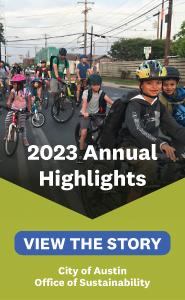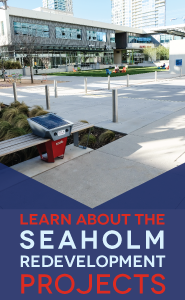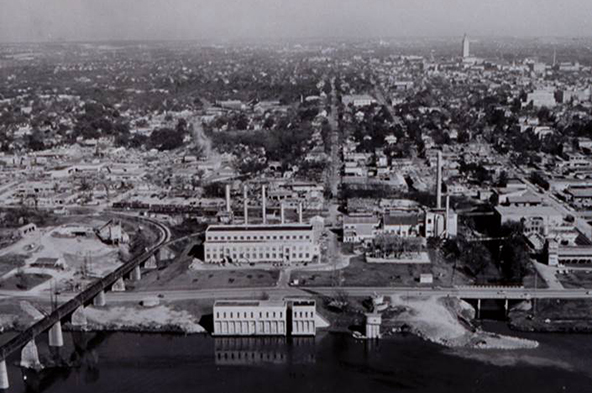The iconic Seaholm Power Plant lends its name to the entire Seaholm EcoDistrict and symbolizes the revitalization of this prominent area in the heart of downtown Austin.
After the power plant was decommissioned in 1989, the property was designated as a brownfield site and was considered too contaminated for use. Between 1997 and 2003, significant investment was devoted to cleaning up the historic site, and in 2005, a public-private partnership was formed to redevelop the building using green design and construction practices.
Restoration of the power plant created a ripple effect of sustainable development surrounding the site, and today, the Seaholm EcoDistrict is a vibrant hub of residential, office, and community gathering spaces that reflect Austin’s spirit of originality and soul.
|
Seaholm area in 1960 |
Seaholm area today |
The 90-acre EcoDistrict exhibits Austin’s commitment to sustainable urban living and contains green features that are good for the environment and people who live, work, or play here.
Seaholm EcoDistrict features:
- Energy Innovation — district-wide air conditioning with chilled water infrastructure and solar panels on roofs and benches.
- Water Conservation — large-scale rainwater collection in cisterns and reclaimed water used for landscaping, irrigation, and toilet flushing.
- Mobility — a compact and connected neighborhood with multi-modal transportation options, including MetroRapid buses, bike- and car-share, walkways, bridges, and urban trails.
- Place-making — public art installations, the iconic Butterfly Bridge, and unique Festival Street and gathering spaces designed to bring people together.
Seaholm EcoDistrict goals:
- Culturally Significant Places — the EcoDistrict is the site of the first permanent settlement in Austin and now includes the adaptive reuse of the historic Seaholm Power Plant and Central Library.
- Green Building — all new development designed and constructed according to LEED or Austin Energy Green Building standards.
- Water Quality — innovative stormwater control measures capture and filter run-off using vegetation to remove pollutants before they return to our lakes, rivers, and streams.
- Wildlife Habitat — Shoal Creek and Shoal Beach restoration includes native riparian plantings for fish, birds, and turtles, and the Central Library green roof provides butterfly habitat.
- Zero-emissions infrastructure — Electric Drive provides fast-charging electric vehicle stations and a Solar Kiosk for charging electric bikes, phones, and tablets.




